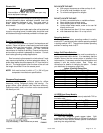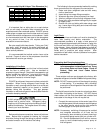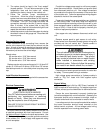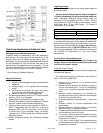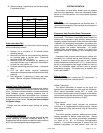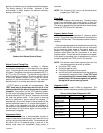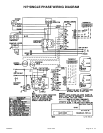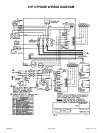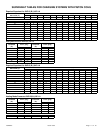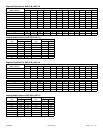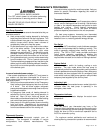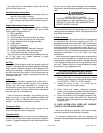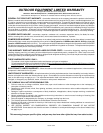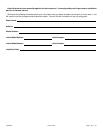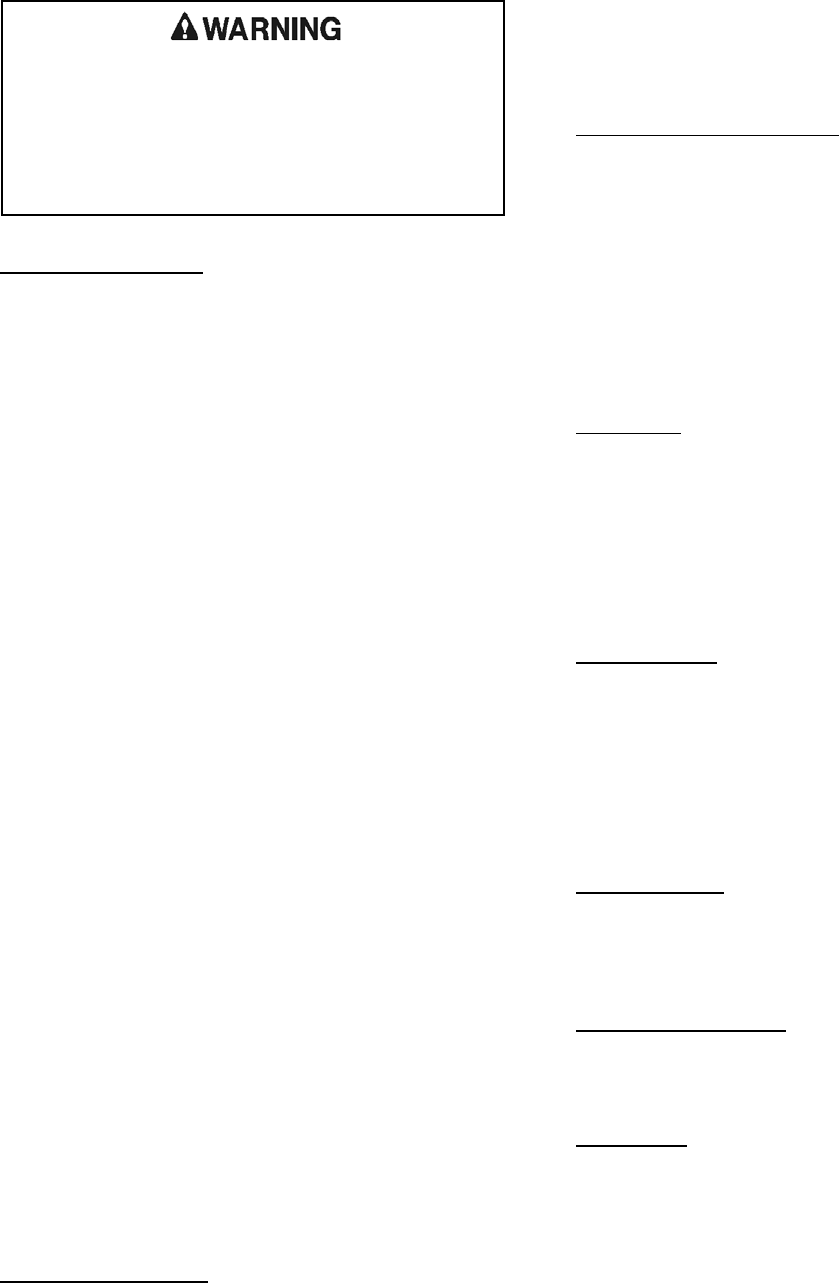
100402-07 Issue 0733 Page 15 of 18
Homeowner's Information
Heat Pump Operation
Your new heat pump has several characteristics that you
should be aware of:
! Heat pumps satisfy heating demand by delivering
large amounts of warm air into the living space. This
is quite different from gas-or oil-fired furnaces or an
electric furnace which deliver lower volumes of
considerably hotter air to heat the space.
! Do Not be alarmed if you notice frost on the outdoor
coil in the winter months. Frost develops on the
outdoor coil during the heating cycle when
temperatures are below 45
/F. An electronic control
activates a defrost cycle lasting 5 to 15 minutes at
preset intervals to clear the outdoor coil of the frost.
! During the defrost cycle, you may notice steam rising
from the outdoor unit. This is a normal occurrence.
The thermostat may engage auxiliary heat during the
defrost cycle to satisfy a heating demand; however.,
the unit will run to normal operation at the conclusion
of the defrost cycle.
In case of extended power outage...
If the outdoor temperature is below 50
/F and power to
your outdoor unit has been interrupted for 6 hours or
longer, observe the following when restoring power to your
heat pump system.
! Set the room thermostat selector to the "Emergency
Heat" setting to obtain temporary heat for a minimum
of 6 hours. This will allow system refrigerant
pressures and temperatures enough time to return to
a stabilized condition.
! In Emergency Heat mode, all heating demand is
satisfied by auxiliary heat; heat pump operation is
locked out. After a 6 hour "warm-up" period, the
thermostat can then be switched to the "Heat" setting
and normal heat pump operation my resume.
! Heat pumps (in the cooling mode) remove humidity
from your home. Depending on the amount of
moisture in the air inside your home, water will trickle
from the condensate drain of the cooling coil.
Thermostat Operation
The wall-mounted thermostat controls your air
conditioner. The thermostat is available in various
configurations from different manufacturers. The
information below is typical for most thermostats. Ask your
dealer for specific information regarding the model of
thermostat installed.
Temperature Setting Levers
Most heat pump thermostats have 2 temperature selector
levers: one for heating and one for cooling. Set the levers
or dials to the desired temperature set points for both
heating and cooling. Avoid frequent temperature
adjustment; turning the unit off and back on before
pressures equalize puts stress on the unit compressor.
On heat pump systems, increasing your thermostat
setting by more than 2 degrees may cause supplemental
heaters to turn on, reducing potential energy savings.
Fan Switch
In AUTO or INT (intermittent ) mode, the blower operates
only when the thermostat calls for heating or cooling. This
mode is generally preferred when humidity control is a
priority. The ON or CONT mode provides continuous
indoor blower operation, regardless of whether the
compressor or auxiliary heat are operating. This mode is
required when constant air circulation or filtering is desired.
System Switch
Set the system switch for heating, cooling or auto
operation. The auto mode allows the heat pump to
automatically switch from heating mode to cooling mode to
maintain predetermined comfort settings. Many heat pump
thermostats are also equipped with an emergency heat
mode which locks out heat pump operation and provides
temporary heat supplied by the auxiliary heat.
Indicating Light
Most heat pump thermostats have an amber light which
indicates when the heat pump is operating in the
emergency heat mode.
Temperature Indicator
The temperature indicator displays the actual room
temperature.
Fan Control
For fan control your thermostat may have a Fan
Selection Switch that allows you to run the fan continuously
or cycle it automatically with the heating or cooling system.
Switch the lever to ON for continuous operation and to
AUTO for automatic cycling.
For maximum comfort satisfaction and continual air
cleaning/filtering, constant fan operation is recommended.
ELECTRICAL SHOCK HAZARD!
Turn OFF electric power to unit before performing
any maintenance or removing panels or doors.
FAILURE TO DO SO COULD RESULT IN BODILY
INJURY OR DEATH.



